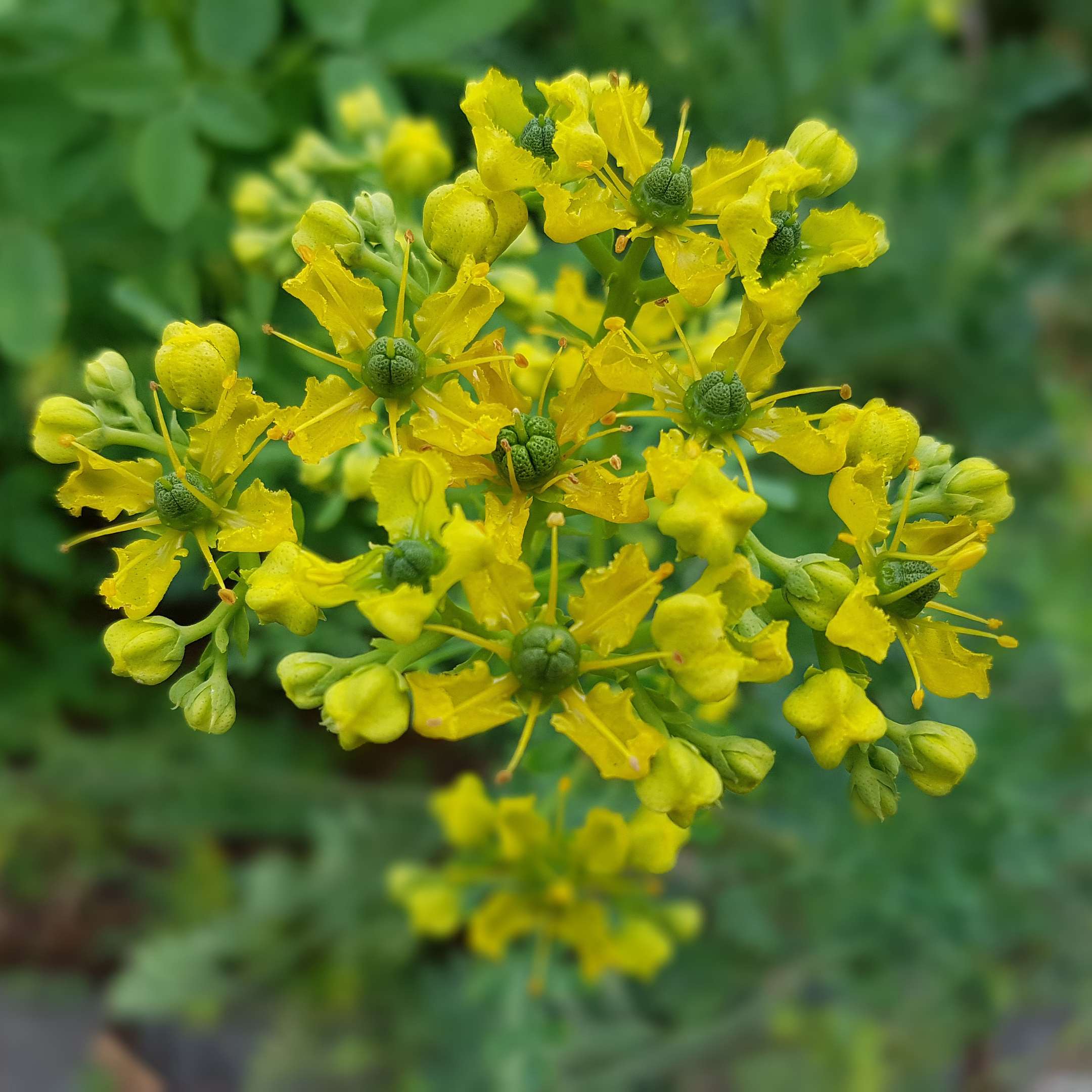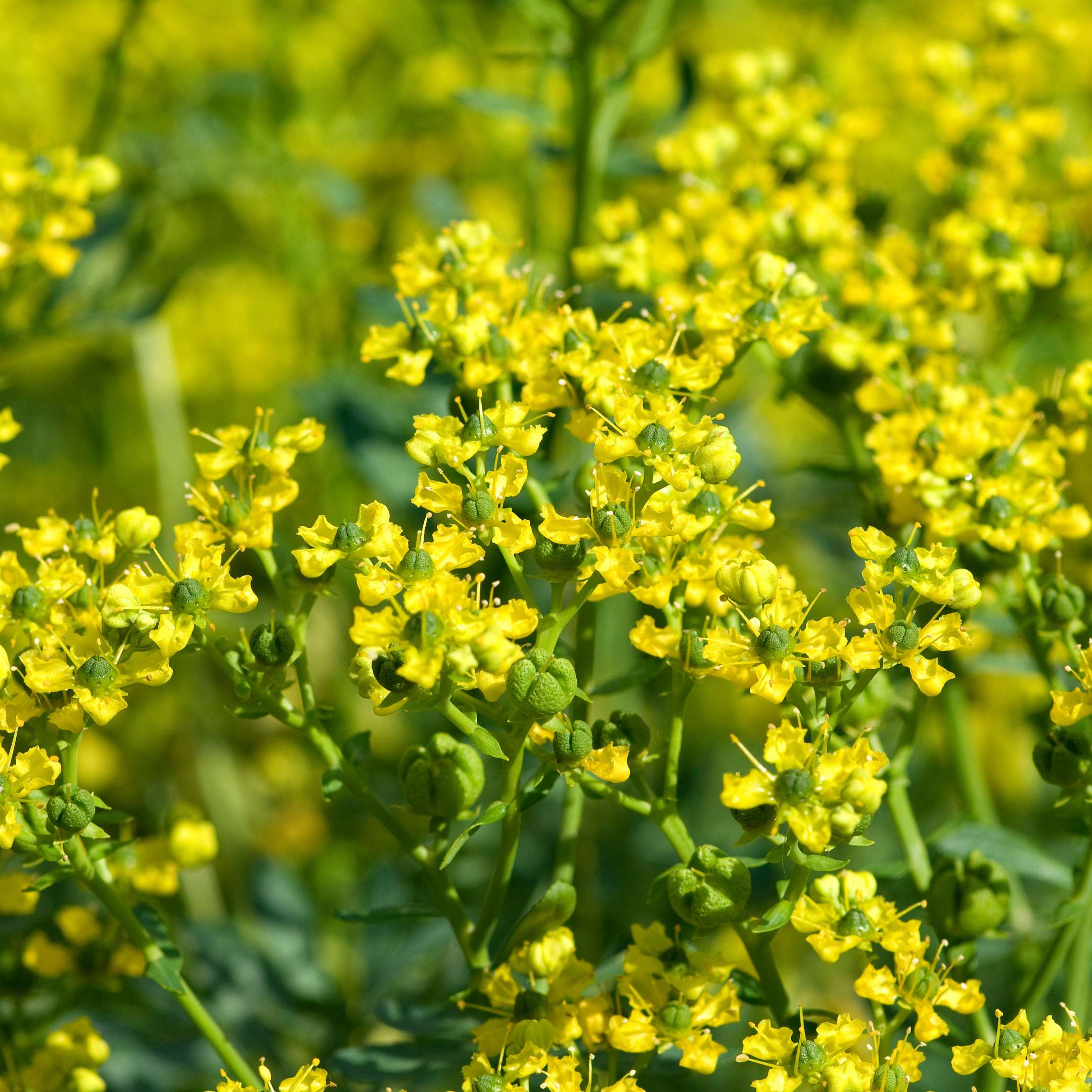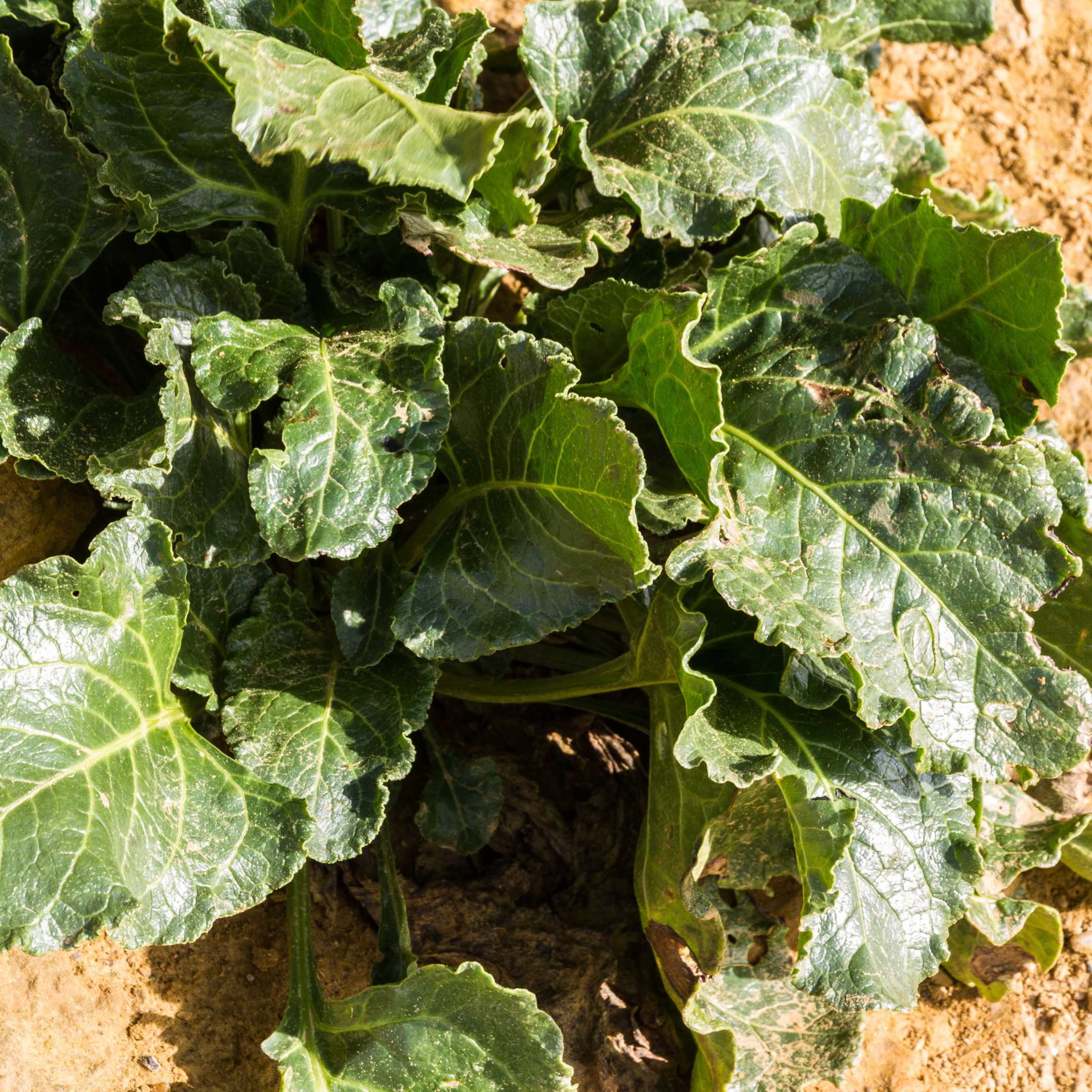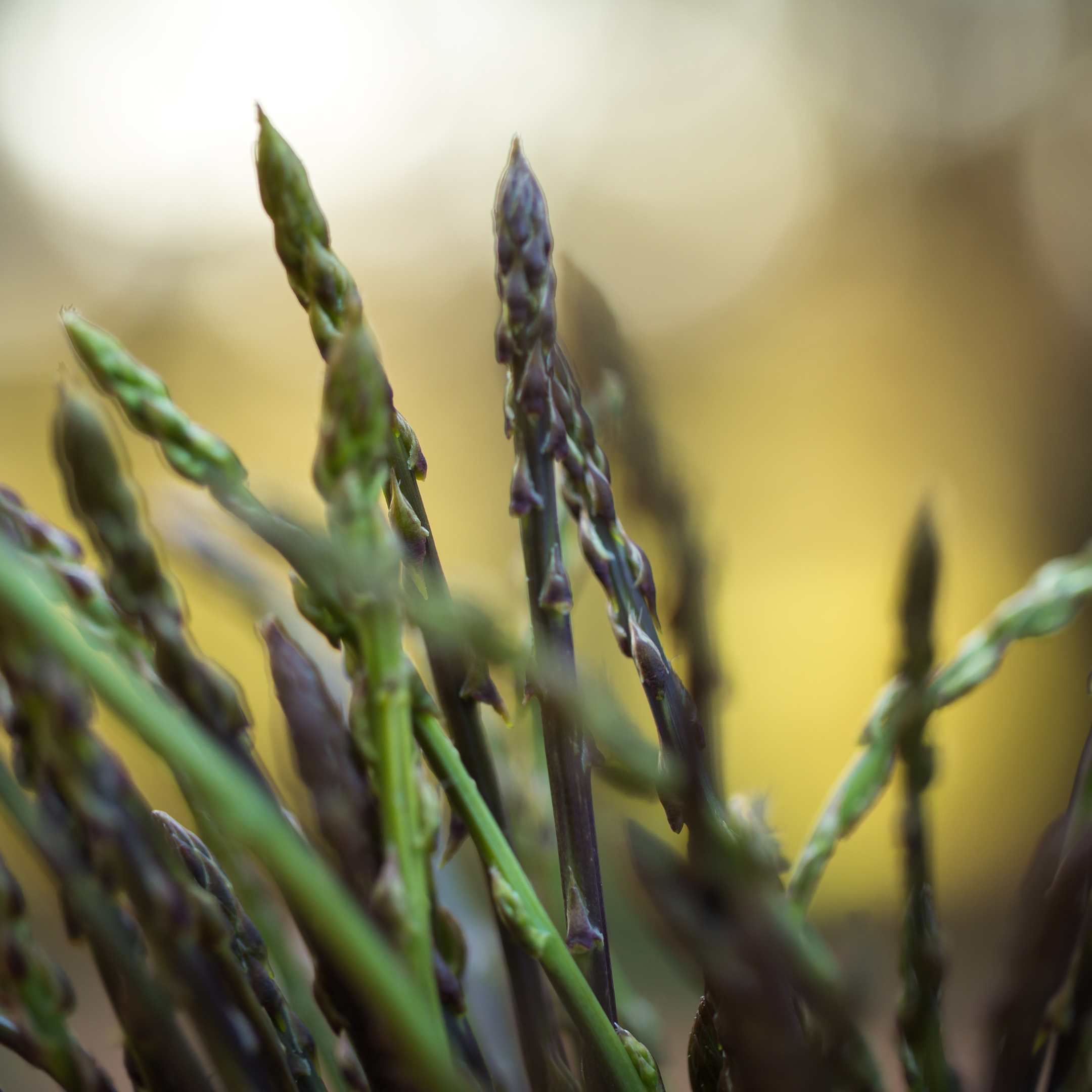Join us for our next Mindful Art session with Abi MacLeod on Saturday August 10th at the Qawsalla Hub from 11am to 1pm for an afternoon of mindful painting! All supplies are provided, just bring
Did you know that Egyptian Rue is found on Gozo and can relieve headaches and more?
Author of, Weeds For Health On Gozo, Heléna Szöllősy shares everything you need to know about the wild plants that make up Gozo’s unique and diverse flora. Enjoy learning about the healing benefits and many usages of Egyptian Rue which flowers on Gozo from May to June.


Botanical Name: Ruta chalepensis –L. Synonyms: Ruta angustifolia, Ruta bracteosa Family Name: Rutaceae Maltese Name: Fejġel Common Names: Egyptian Rue, Fringed rue, Wall rue Meaning of the Name: Ruta from Latin borrowed from Greek rhyte [ῥυτή]. The origin of the (originally Greek) name Ruta is unknown. Ruta may derive from the Greek rhutos, ’shielded,’ in view of its long history as an antidote or from the Greek reuo,’ to set free’, because this herb is so efficacious in various diseases, chalepensis, of or from Aleppo in north-western Syria.
DESCRIPTION
Egyptian Rue is an evergreen shrub growing up to 2ft plus. It is a densely branched subshrub with leaves that are spirally arranged. On Gozo, flowers appear from May to June.

- Habitats: Rocky places, woods, dry banks, and thickets, usually on limestone
- Range: Native to the Mediterranean, Eurasia – South Europe, Southwest Asia, and North Africa
- Status for Malta: Indigenous. Originating from Maltese islands. Common in the wild.
- Parts Used: the whole herb
- Herbal Actions: Abortifacient, Analgesic, Anticancer, Antiparasitic, Antispasmodic, Aromatic, Bitter, Emmenagogue, Nervine, Ophthalmic, Rubefacient
- Main Active Constituents: alkaloids (kokusaginin, skimmianin, graveolin, γ-fagarin, dictamnin, arborinin), caprinic acid, furanocoumarins (bergapten, chalepensin) (plagonic acid, caprylic acid, cineol: limonene, pinene, quercetin, rutin, oenanthylic acid, volatile oil
INTERNAL USES:
- The compounds isolated from Ruta chalepensis and Ruta graveolens (common rue) are essentially the same with slight differences.
- The plant is an abortifacient, anthelmintic, emmenagogue, and ophthalmic. A decoction of the plant has been used in the treatment of paralysis, coughs, and stomach aches. An aqueous-alcoholic extract of the leaves can be drunk as an anti-implantation and uterotonic medicine.
- Rue Extracts have also been shown to possess anti-inflammatory properties.
- A root decoction in an alcoholic drink, with hot peppers, is taken to treat influenza.
- A decoction of the pulverized fruits in milk is taken to treat diarrhea.
- Plant sap is taken to treat stomachache.
- A leaf decoction with tea is taken to treat headaches, fever, and the common cold.
- In southern Africa, the oil obtained from the aerial parts is applied externally as a rub to treat stomachache, colic, hysteria, and epilepsy and is taken orally as an anthelmintic.
- Among the Tswana of southern Africa, a decoction of the whole plant in high doses is taken to ease childbirth.
EXTERNAL USES:
- Topically, the oil may be rubbed lightly over the womb during menstruation for cramps and colic.
- Rue is an active irritant, being employed as a rubefacient.
- If bruised and applied, the leaves will ease the severe pain of sciatica.
- The fresh leaves applied to the temples are said to relieve headaches.
- Compresses saturated with a strong decoction of the plant, when applied to the chest, have been used beneficially for chronic bronchitis.
- The leaves have been heated and then placed inside the ear to treat earache.
- If a leaf or two is chewed, a refreshing aromatic flavour will pervade the mouth, and any headache, giddiness, hysterical spasm, or palpitation will be quickly relieved.
EDIBLE USES:
- Traditionally rue has been used for centuries as a condiment of food and alcoholic beverages in the Mediterranean region, but its use has much declined because of its bitter taste. The fragrance of the leaves are strong, characteristically aromatic, and sweet. The fruits taste similar but are stronger and somewhat hot. In Ethiopia, fresh leaves of Ruta chalepensis are used as a flavouring of a beverage called ‘Kuti’, which is an infusion of coffee leaves. The leaves are also a component of the spicy Capsicum sauce ‘Berbere’.
- Washed leaves are also added to sour milk to make local cheese. The tops of the fresh shoots are the most active and should be gathered before the plant flowers.
OTHER USES
- An essential oil obtained from the leaves is used as a flavouring agent in perfumes and soaps.
- The dried and crushed leaves are also an effective insect repellent.
- PRECAUTIONS:
- Egyption Rue is toxic in large doses; you should not experiment with Rue if you are not familiar with using herbs.
- Do not boil rue. Do not use in large quantities. Do not use for more than 6 weeks at a time.
- Avoid if suffering from haemorrhagic diseases or peptic ulcers.
- May increased sensitivity to the sun. It is unsafe for both mother and unborn child to take rue during pregnancy or breast-feeding.
- Rue can cause uterine contractions, which can cause a miscarriage.
- Rue can make existing GI problems worse.
- Rue can harm the kidney and irritate the urinary tract.
- Rue can make existing liver problems worse.
- Rue interacts negatively with blood-thinning medications, may prolong blood coagulation time.
Make This! Rue Oil
Preparation
- Take a 1 litre jar and stuff it with fresh rue leaves.\
- Cover the leaves with olive oil and store in a dark cool place for a week.
Want to learn what else you can forage on Gozo? Click here.
Author : Heléna Szöllősy. Editor: GITH

Helena is an expert on the medicinal properties of plants having trained in Herbal Medicine and Naturopathy, specialising in Phytotherapy including Homeopathy, Aromatherapy, Apitherapy and Bach Flower Therapy.
Information on the traditional uses and properties of herbs is provided in this book for educational purposes only and is not intended as medical advice. This information is not intended to be used to diagnose, prescribe or replace professional medical care. If you have any serious health concerns, you should always check with your healthcare practitioner before self-administering herbs. Please also undertake your own research when foraging. Some wild plants are endangered and are protected by law.






